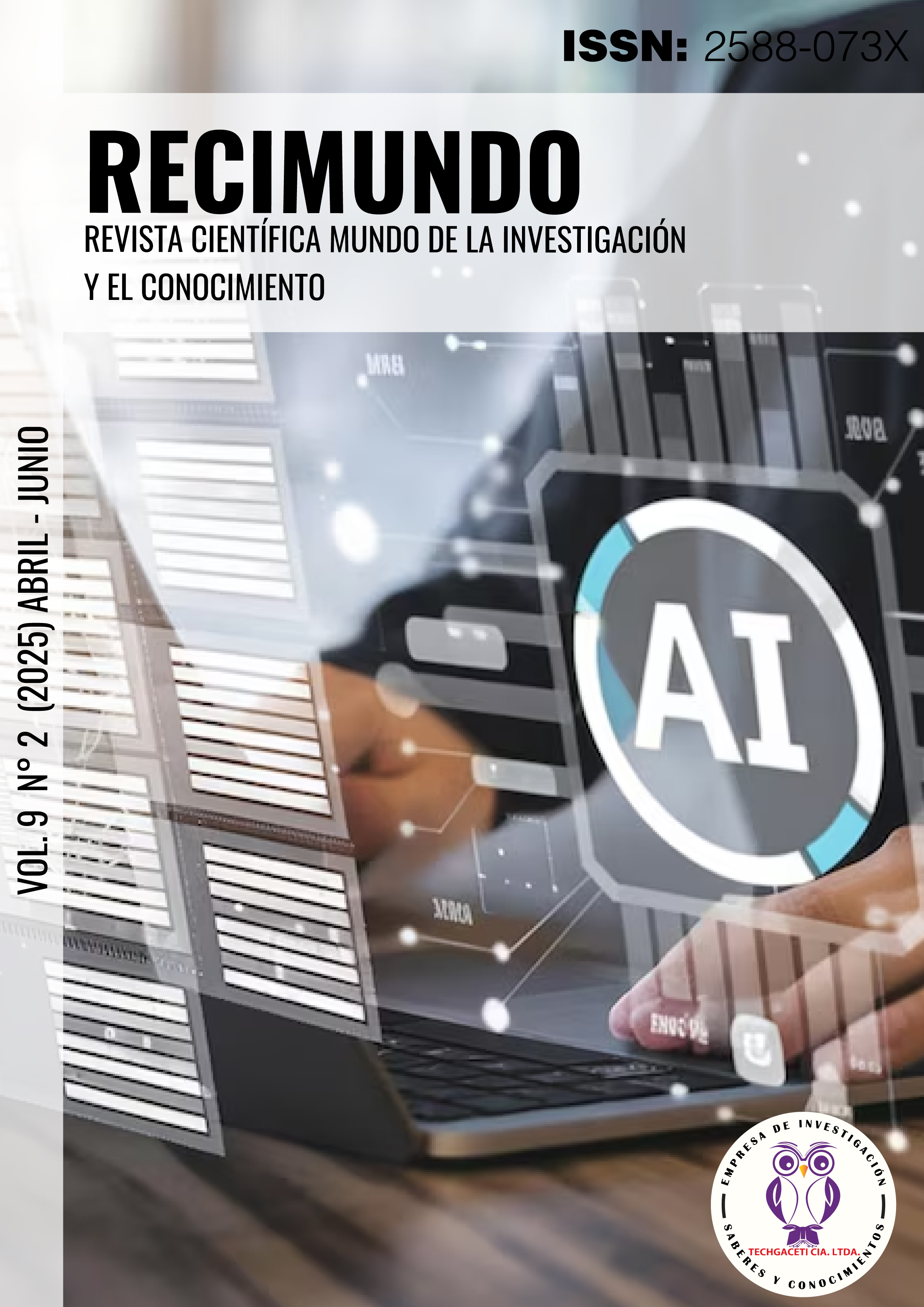Nivel de aceptación de los tipos de agua envasada en la ciudad de Guayaquil
DOI:
https://doi.org/10.26820/recimundo/9.(2).abril.2025.596-607Keywords:
Agua envasada, Comportamiento del consumidor, Sostenibilidad urbana, Confianza en el agua potableAbstract
Este estudio analiza la aceptación y percepción del consumo de agua envasada en Guayaquil, Ecuador, donde la desconfianza en el agua del grifo ha impulsado el crecimiento del mercado embotellado. El objetivo fue identificar las preferencias de los consumidores, los factores que influyen en sus decisiones y las implicaciones sociales y ambientales del consumo. Mediante un enfoque cuantitativo, descriptivo y correlacional, se encuestó a adultos mayores de 18 años. Se recopilaron datos sobre perfil sociodemográfico, hábitos de consumo, percepción de riesgo, preferencias de marca y conciencia ambiental. Los resultados muestran que el 83,8 % consume agua envasada, con una fuerte preferencia por el agua purificada, asociada a seguridad y limpieza. Aunque el 61,7 % se siente seguro al consumirla, solo el 51,5 % confía plenamente en su calidad. El 84,7 % está dispuesto a pagar más por pureza garantizada y el 75,5 % valora envases reciclables, especialmente entre jóvenes. Las marcas más reconocidas fueron Dasani, All Natural y Pure Water. Los criterios de elección más importantes fueron calidad, sabor, precio y pureza. En conclusión, el agua embotellada no solo cumple una función práctica, sino que representa un símbolo de salud, estatus y seguridad. Sin embargo, su consumo creciente plantea tensiones entre el derecho al agua, la sostenibilidad y la equidad ambiental. La mercantilización de un recurso esencial exige fortalecer la confianza en el sistema público, regular la industria embotelladora y fomentar el consumo responsable. Este estudio resalta la necesidad de políticas integrales que aborden tanto la dimensión técnica como sociocultural del acceso al agua en contextos urbanos.Downloads
References
Banco Central del Ecuador. (2022). Boletín estadístico mensual: Consumo de bebidas no alcohólicas. https://www.bce.fin.ec
Doria, M. F. (2006). Bottled water versus tap water: Understanding consumers’ preferences. Journal of Water and Health, 4(2), 271–276. https://doi.org/10.2166/wh.2006.008
Howard, G., Bartram, J., Williams, A., Overbo, A., & Geere, J.-A. (2005). Domestic water quantity, service level and health. World Health Organization. https://www.who.int/publications/i/item/9789241548518
Instituto Ecuatoriano de Normalización (INEN). (2019). Norma Técnica Ecuatoriana INEN 2200: Agua Potable Envasada. Requisitos. https://www.normalizacion.gob.ec
Ministerio del Ambiente, Agua y Transición Ecológica. (2022). Informe nacional sobre residuos plásticos en Ecuador. https://www.ambiente.gob.ec
Organización de las Naciones Unidas (ONU). (2015). Objetivos de Desarrollo Sostenible. https://sdgs.un.org/goals
Saylor, A., Prokopy, L. S., & Amberg, S. (2011). What's wrong with the tap? Examining perceptions of tap water and bottled water at Purdue University. Environmental Management, 48(3), 588–601. https://doi.org/10.1007/s00267-011-9706-5
Statista. (2023). Bottled water - Worldwide revenue 2016–2028. https://www.statista.com/statistics/597113/revenue-bottled-water-worldwide/
Wilk, R. (2006). Bottled water: The pure commodity in the age of branding. Journal of Consumer Culture, 6(3), 303–325. https://doi.org/10.1177/1469540506068681
Associated Press. (2024, enero 9). Scientists find about a quarter million invisible nanoplastic particles in a liter of bottled water. AP News. https://apnews.com/article/nanoplastics-bottled-water-study-22f61ea54f7f91c08ec0dc03b8dfb5f0
Arias-Andrés, M., & Rojas-Jiménez, K. (2022). Occurrence of microplastics in tap and bottled water, and food packaging: A narrative review on current knowledge. Science of the Total Environment, 806, 150565. https://doi.org/10.1016/j.scitotenv.2021.150565
Doria, M. F. (2006). Bottled water versus tap water: Understanding consumers’ preferences. Journal of Water and Health, 4(2), 271–276. https://doi.org/10.2166/wh.2006.008
Howard, G., Bartram, J., Williams, A., Overbo, A., & Geere, J.-A. (2005). Domestic water quantity, service level and health. World Health Organization. https://www.who.int/publications/i/item/9789241548518
Saylor, A., Prokopy, L. S., & Amberg, S. (2011). What's wrong with the tap? Examining perceptions of tap water and bottled water at Purdue University. Environmental Management, 48(3), 588–601. https://doi.org/10.1007/s00267-011-9706-5
Statista. (2023). Bottled water - Worldwide revenue 2016–2028. https://www.statista.com/statistics/597113/revenue-bottled-water-worldwide/
United Nations University Institute for Water, Environment and Health (UNU-INWEH). (2023). Global Bottled Water Industry: A review of impacts and trends. https://inweh.unu.edu
Wilk, R. (2006). Bottled water: The pure commodity in the age of branding. Journal of Consumer Culture, 6(3), 303–325. https://doi.org/10.1177/1469540506068681
Published
How to Cite
Issue
Section
License
Copyright (c) 2025 Galo Enrique Estupiñán Vera, Jessica Paola Briceño Castillo, Jorge David Cazañas Chica, Ackerley Azaleia Vinces Muñoz

This work is licensed under a Creative Commons Attribution-NonCommercial-ShareAlike 4.0 International License.



